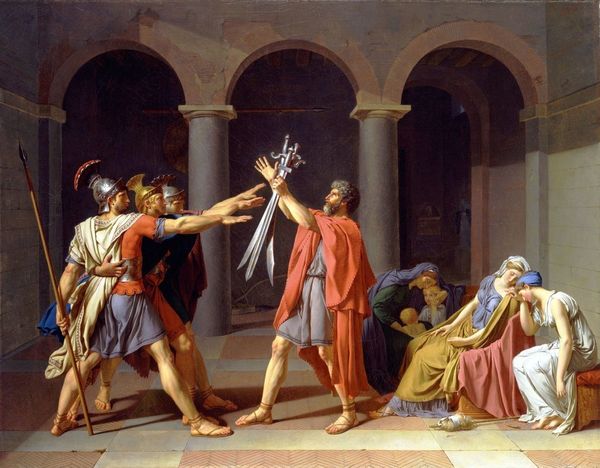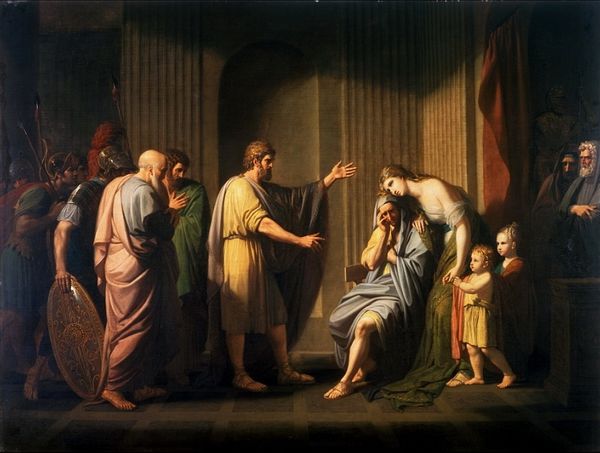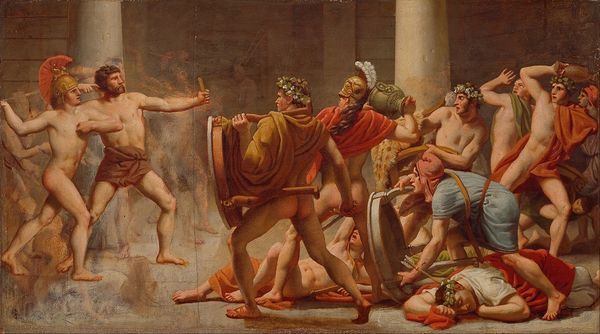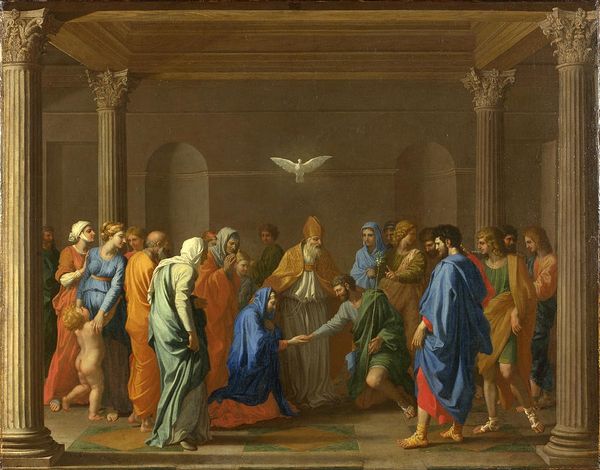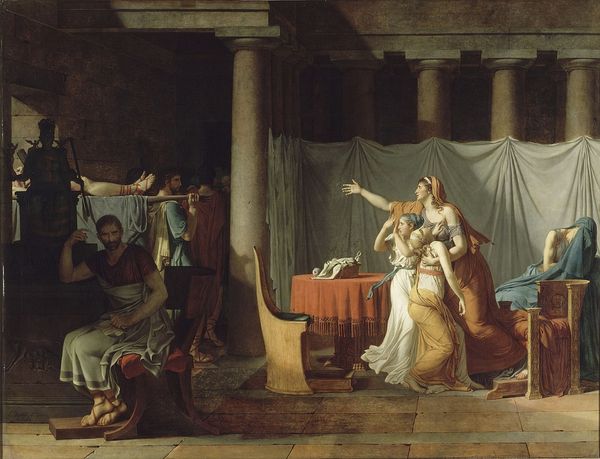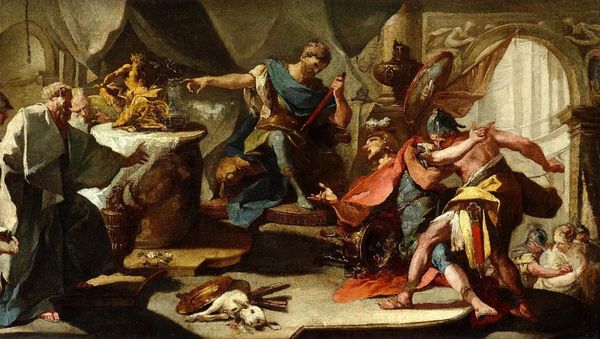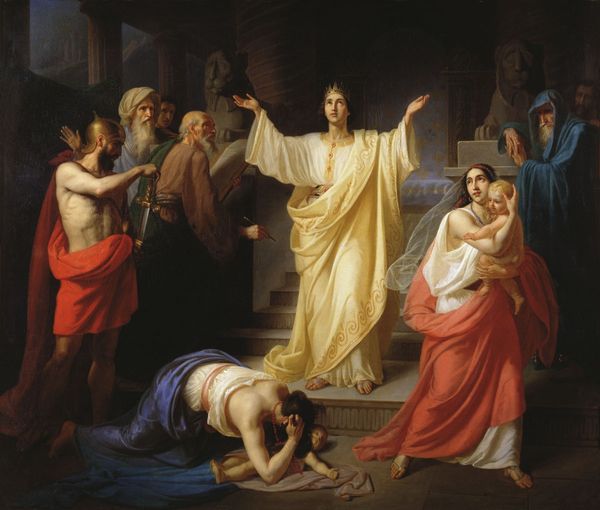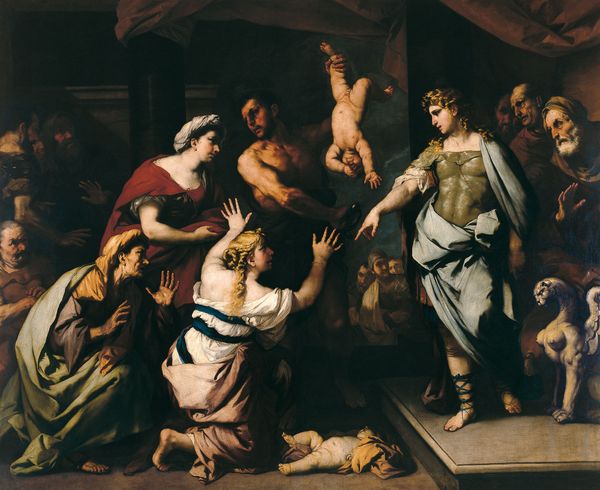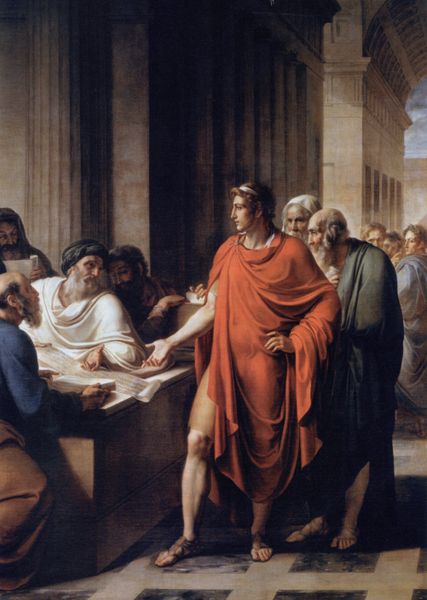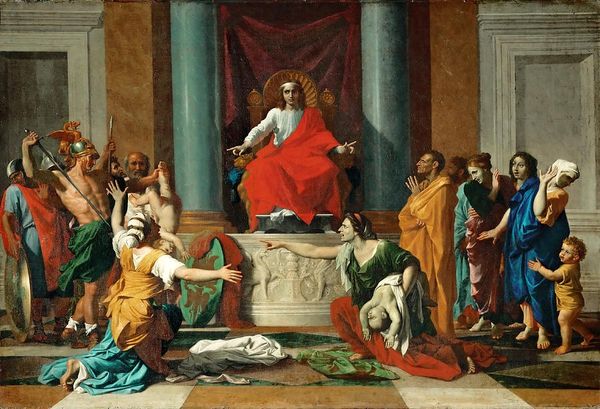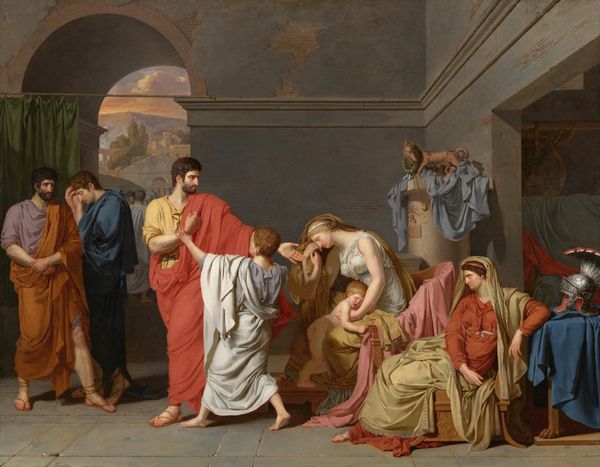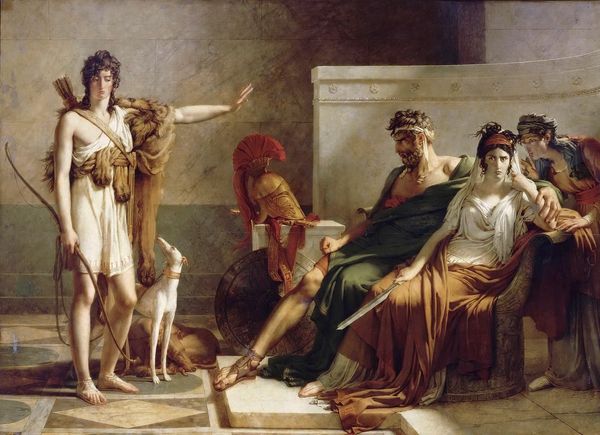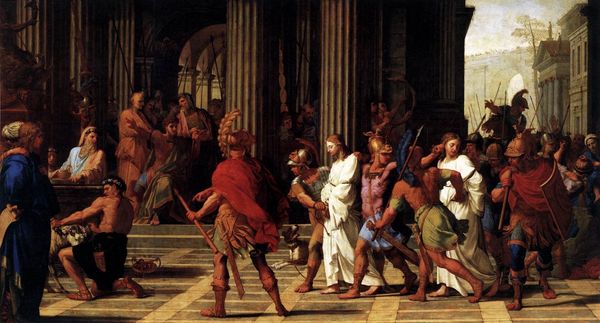
painting
#
neoclacissism
#
allegory
#
cosplay
#
painting
#
greek-and-roman-art
#
landscape
#
festivity and dance
#
performing
#
figuration
#
culture event photography
#
historical fashion
#
famous-people
#
classicism
#
cultural celebration
#
traditional dress
#
asian style outfit
#
mythology
#
human
#
line
#
history-painting
#
multicultural outfit
#
academic-art
#
sword
#
realism
#
ethnic design
Dimensions: 330 x 425 cm
Copyright: Public domain
Curator: Look at how Jacques Louis David has frozen this moment in time. "The Oath of the Horatii", completed in 1784 and now gracing the walls of the Louvre, seems almost too perfectly staged, doesn't it? Editor: Staged is right. I’m immediately struck by the stark contrast – the rigid masculinity on the left versus the slumped, sorrowful feminine forms on the right. It’s so dramatically opposed it feels... operatic, I guess? Curator: Indeed. It’s a masterclass in Neoclassical composition. The three arches in the background mirror the three brothers taking their oath, creating a sense of order and balance, even within this moment of high tension. I love how the light seems to pool on the men, giving them this heroic glow, while the women are shrouded in shadow. Editor: And what does it all signify? These aren’t just folks posing with swords. The painting depicts a story from Roman history—a conflict between Rome and Alba Longa settled by a duel between three Roman brothers, the Horatii, and three Alban brothers. David's highlighting the supposed patriotic self-sacrifice against the grief of those left behind. But isn't it all so… binary? Curator: I hear you. But doesn’t that push the viewer into an emotional space, even a state of discomfort? David really emphasizes the moral weight of patriotism and duty here. It becomes an exercise in… what are we willing to give up, as citizens, as individuals, as humans? Editor: Precisely! It’s propaganda cloaked in exquisite brushstrokes, reflecting the pre-revolutionary fervor in France. It seems that in the guise of depicting Roman virtue, David's pushing a proto-nationalist agenda, downplaying the cost – those grieving women, the broken families. The work certainly forces us to ponder, ‘who benefits?' and 'whose voices are heard—or erased—in the name of glory?' Curator: You've pierced the canvas! It seems that it offers a powerful, even challenging lesson to modern viewers. By highlighting, as you point out, the uncomfortable binary between glory and sacrifice. It seems that the oath resonates far beyond 1784, in ways both profound and deeply problematic. Editor: Indeed. Examining the social narratives that inform art historical memory seems key. We might see "The Oath of the Horatii" not as a static monument of heroism, but as a mirror reflecting our own ongoing struggles with power, gender, and the price of progress.
Comments
No comments
Be the first to comment and join the conversation on the ultimate creative platform.
